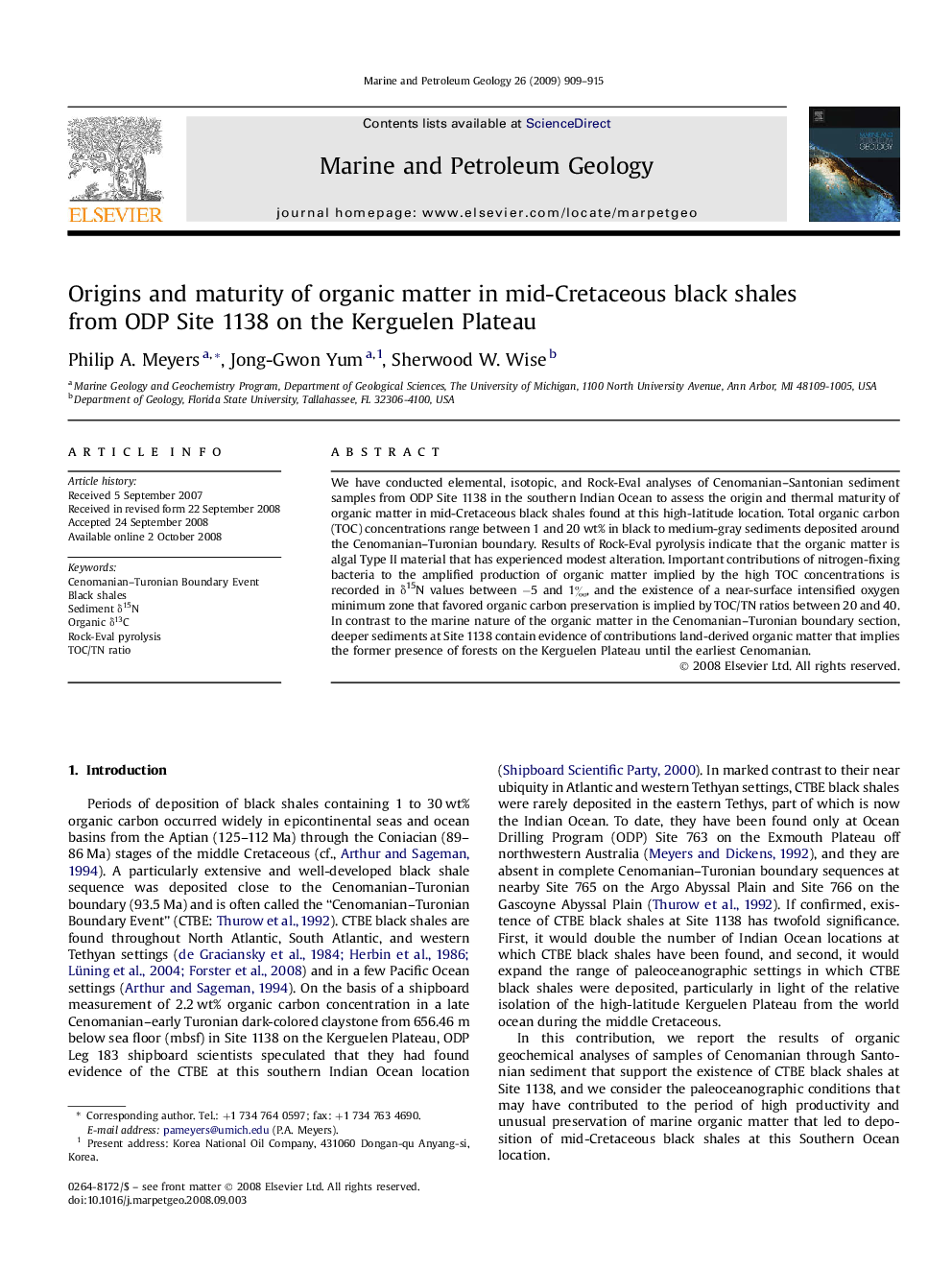| Article ID | Journal | Published Year | Pages | File Type |
|---|---|---|---|---|
| 4696620 | Marine and Petroleum Geology | 2009 | 7 Pages |
We have conducted elemental, isotopic, and Rock-Eval analyses of Cenomanian–Santonian sediment samples from ODP Site 1138 in the southern Indian Ocean to assess the origin and thermal maturity of organic matter in mid-Cretaceous black shales found at this high-latitude location. Total organic carbon (TOC) concentrations range between 1 and 20 wt% in black to medium-gray sediments deposited around the Cenomanian–Turonian boundary. Results of Rock-Eval pyrolysis indicate that the organic matter is algal Type II material that has experienced modest alteration. Important contributions of nitrogen-fixing bacteria to the amplified production of organic matter implied by the high TOC concentrations is recorded in δ15N values between −5 and 1‰, and the existence of a near-surface intensified oxygen minimum zone that favored organic carbon preservation is implied by TOC/TN ratios between 20 and 40. In contrast to the marine nature of the organic matter in the Cenomanian–Turonian boundary section, deeper sediments at Site 1138 contain evidence of contributions land-derived organic matter that implies the former presence of forests on the Kerguelen Plateau until the earliest Cenomanian.
